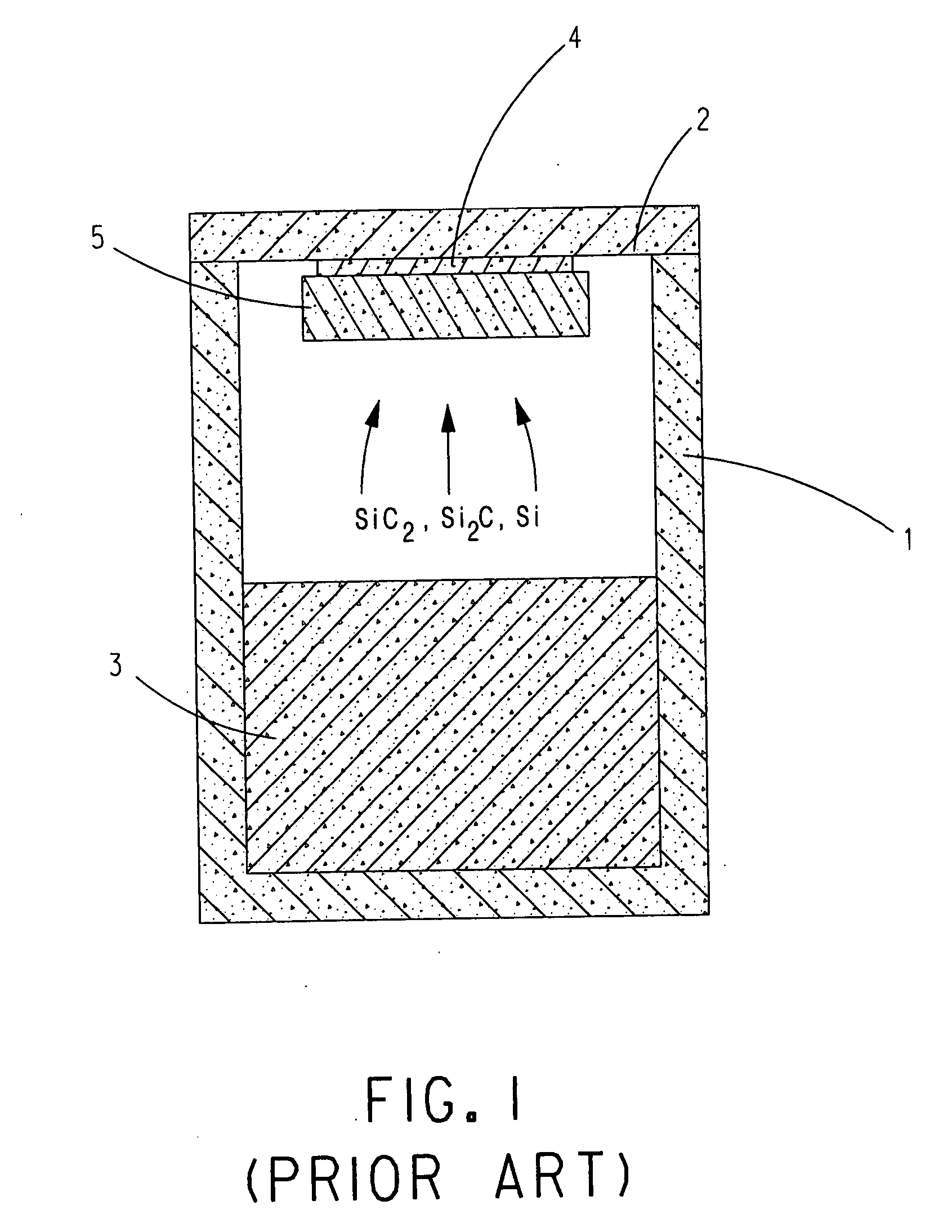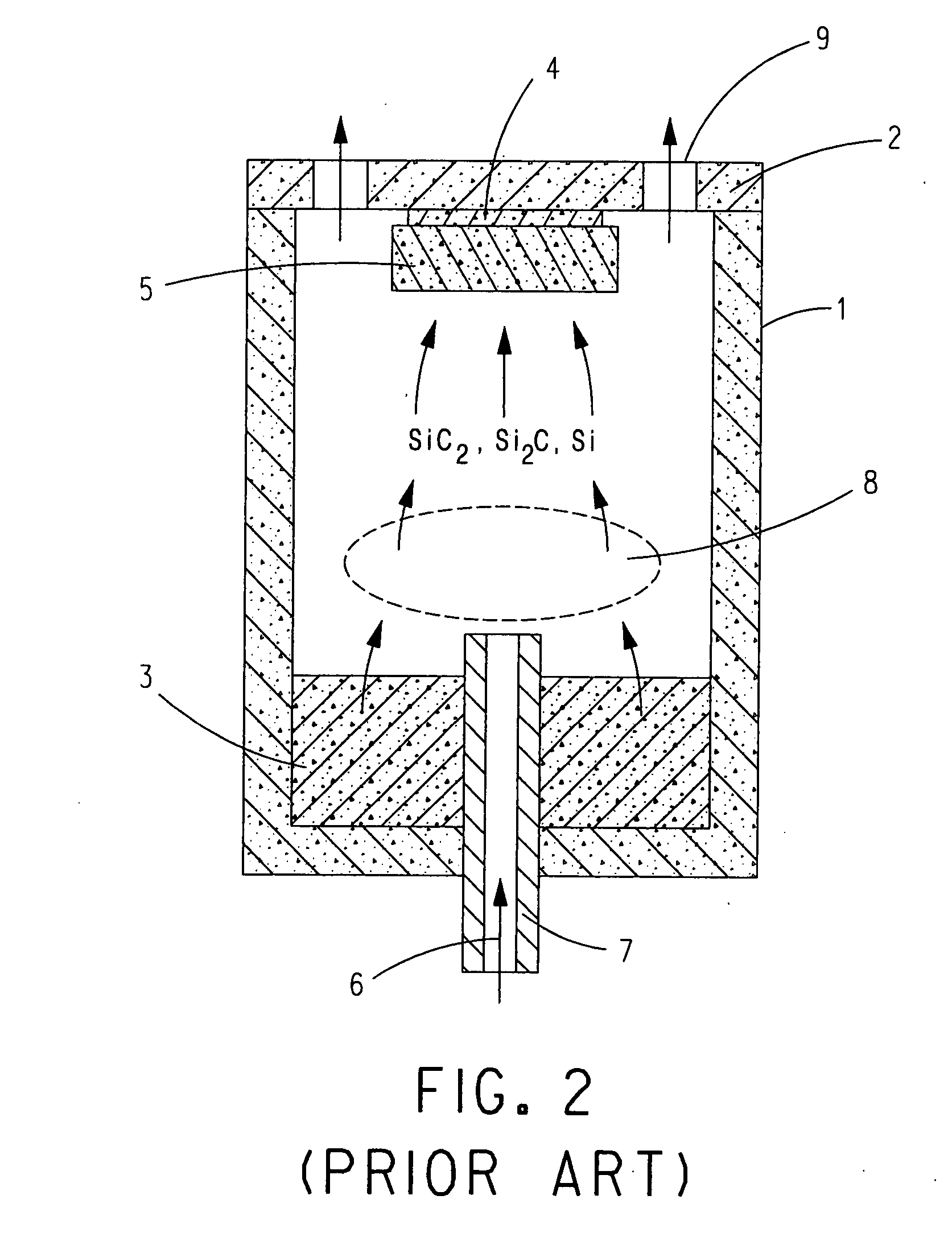Silicon carbide single crystals with low boron content
a technology of silicon carbide and single crystals, which is applied in the direction of single crystal growth details, single crystal growth, chemistry apparatus and processes, etc., can solve the problems of contaminating the growing crystal and the loss of silicon from the growth charge, so as to reduce the chemical attack on the sic source and reduce the loss. , the effect of reducing the loss
- Summary
- Abstract
- Description
- Claims
- Application Information
AI Technical Summary
Benefits of technology
Problems solved by technology
Method used
Image
Examples
Embodiment Construction
[0040] The following embodiment will be described with reference to the accompanying figures where like reference numbers correspond to like elements.
[0041] SiC sublimation growth is conducted under a dynamic reactive atmosphere containing halogen. Halogen converts boron, whether free or chemically bound, into volatile boron halides that are removed from the interior of the growth crucible by the flow of inert carrier gas filtering across the permeable crucible wall.
[0042] With reference to FIG. 3, more specifically, PVT sublimation growth of silicon carbide is carried out in a graphite growth crucible 1 sealed with a graphite lid 2. Desirably, crucible 1 and lid 2 are made of high-density, fine-grain and low-porosity graphite, such as “ATJ” available from Union Carbide Corporation of Danbury, Conn., under registered trademark UCAR® (registration number 1008278), or similar. Growth crucible 1 is loaded with a SiC polycrystalline source 3 and a noncrystalline seed crystal 4. Source...
PUM
 Login to View More
Login to View More Abstract
Description
Claims
Application Information
 Login to View More
Login to View More - R&D
- Intellectual Property
- Life Sciences
- Materials
- Tech Scout
- Unparalleled Data Quality
- Higher Quality Content
- 60% Fewer Hallucinations
Browse by: Latest US Patents, China's latest patents, Technical Efficacy Thesaurus, Application Domain, Technology Topic, Popular Technical Reports.
© 2025 PatSnap. All rights reserved.Legal|Privacy policy|Modern Slavery Act Transparency Statement|Sitemap|About US| Contact US: help@patsnap.com



